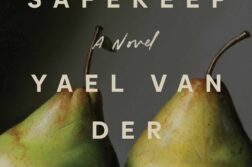JENNA ORTEGA kisses Sabrina Carpenter in Sabrina’s new music video, and we swoon. “It’s a lesbian renaissance!” declares an influencer on the Internet. Chappell Roan is at the height of the music industry after coming out as a lesbian, as are Billie Eilish and Renée Rapp.
Renée also gave face and voice to the rebooted Regina George—the original beloved by so many sapphic Millennials. Billie describes how she’d “eat that girl for lunch” in her newest album, including duets with Charli XCX in which she assures us that “Charli likes boys, but she knows I’d hit it” (in the song “Guess,” written by Charli XCX) In the recent past, we’ve gotten sapphic representations from Janelle Monet, and every 1990s lesbian collectively screamed in excitement when we got to claim Raven Simone. Last year, we got to see Tracy Chapman sing “Fast Car” on stage at the Grammys—unapologetically Black and butch, with graying locs.
It’s true! Lesbians—collectively and specifically—are having a moment: some sort of huge, culture-shifting, paradigm-tilting rise in society right now that’s not trending as a porn category. The most recent lesbian renaissance—no doubt there were previous ones—occurred during the AIDS crisis, when lesbians both saved lives and came into their own. Tracy Chapman released her single “Fast Car” and her self-titled album in 1988. Melissa Ethridge would release “Come to My Window” a few years later (in 1993), and K.D. Lang would pose for her infamous Vanity Fair shoot with Cindy Crawford that same year.
And this renaissance doesn’t just apply to the music industry. As a writer, I am also a reader, and the amount of queer literature I have stacked in my apartment is more than I could read in a year or a decade. I can’t help but think of high school, when I had just come out and read Annie on my Mind, by Nancy Garden, for the first time. It was the very first time I ever saw a positive storyline in a novel that reflected my life. It wasn’t pulp, and there was no gay death trope. It was just two teenage girls in love—just as I was. Now I stare at stacks of books with unapologetic lesbians centered on their covers. It is not that every story is pristine and clean and unproblematic, or won’t that it won’t be a little sad or messed up or scary or disillusioning. It’s that they all feature women like me or women I could be like, or want to be like, or would never want to be like. We aren’t one-dimensional characters anymore. We aren’t jokes. We aren’t just about sex. We live rich lives both on and off the page.
We have a rich history that seems to be adapting at warp speed right now, changing society. Chappell Roan has given femme lesbians an icon to be as crazy and full of feminine rage as we want, with our lipstick smeared and our heels high. Renée Rapp and Billie Eilish give us permission to be presentationally fluid and lyrically audacious. Melissa and Tracy gave us permission to come to the window and save a little money and go somewhere together. Our elders give us permission to keep going.
The lesbian renaissance is here, but it is built on the backs and many others. Many of them crept, whispered, crawled, and used gender-neutral pronouns in their work so we could run, jump, and scream: “I’m a woman and I love pussy!” We aren’t the number one trending pornography category; we are the number one trending pop album category. And a whole lot more.
_______________________________________________________
Ann McCann, a senior editor at Fruitslice magazine, a digital quarterly featuring queer artists, writers, and creators.




